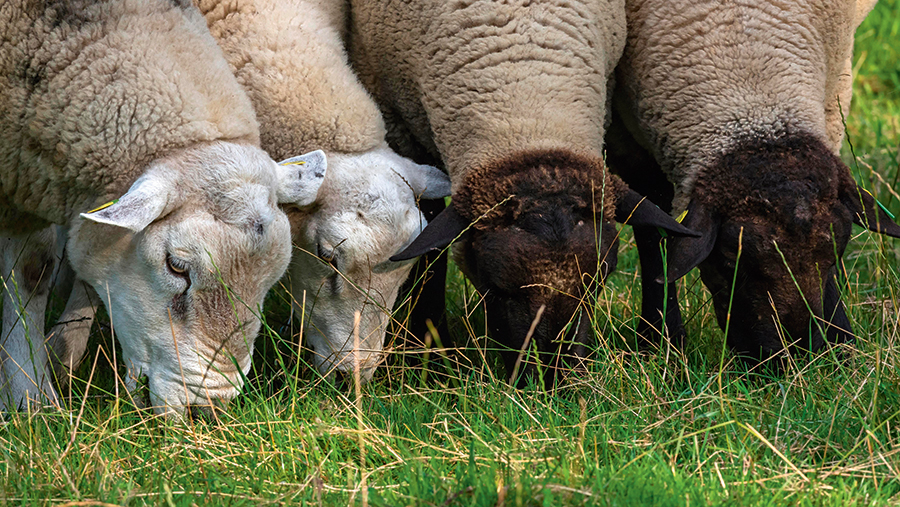Why farmers should assess costs before changing sheep breed
 © Helmut Meyer Zur Capellen/ImageBROKER/Shutterstock
© Helmut Meyer Zur Capellen/ImageBROKER/Shutterstock Sheep farms should fully cost their flock profit margins and assess the impact of small gains in technical performance before looking to change breed or system.
This was the message of independent sheep consultant Lesley Stubbings to the Sheep Breeders Roundtable last week (15-17 November), telling the audience that a 5% increase in lambs sold and a 200g lift in average carcass weight could lift ewe profit margin by £4.82 (see table).
Using AHDB Stocktake figures for the top third of farms, Ms Stubbings showed conference delegates how a small lift in output led to a 5p/kg saving on variable costs by sharing them over more kilos.
Similarly, the improvement brought a 9p/kg fall in fixed costs.
See also: 6 ways to future-proof your sheep business
She said a strong business focus had understandably swept across the industry, leading to cost cutting and scrutiny of inputs.
However, she said producers should fully cost out the effect of cutting costs and consider the impact on output and earnings.
“Arbitrary cost cutting is a road to nowhere,” she said, adding that vet and medicine spend, for example, could pay for itself with increased output and should be seen as an investment rather than a cost.
“The first step many farms take is to cut costs. The next thing seems to be to change breed. But the problem is, if the issue is with flock health, management or in the business, it will still be there when the new breed arrives.”
Advice: Questions for your flock
- What are my replacement costs?
- How will spending £5 more on my female replacements affect my costs and what lift in output do I need to pay for it?
- Can I afford not to have a flock health plan and not carry out abortion vaccinations if I am buying in replacements?
- What can I test my flock or my farm for? What does this cost and what lift in output do I need to pay for it?
| Small lift in flock productivity can improve profit | ||||
|
|
£/ewe |
p/kg carcass |
£/ewe |
p/kg carcass |
|
Lambs sold per ewe (lambing index) |
1.57 |
|
1.62 |
|
|
Average carcass weight |
18.3kg |
|
18.5kg |
|
|
Production index – kg of carcass |
28.7 |
|
30 |
|
|
Variable costs |
||||
|
Feed |
£6.47 |
23p |
£6.47 |
22p |
|
Vet and med |
£3.48 |
12p |
£3.48 |
12p |
|
Other feed |
£1.21 |
4p |
£1.21 |
4p |
|
Misc |
£4.99 |
17p |
£4.99 |
17p |
|
Replacement ewes |
£12.36 |
43p |
£12.36 |
41p |
|
Replacement rams |
0 |
0 |
0 |
0 |
|
Forage |
£5.88 |
20p |
£5.88 |
20p |
|
Total variable costs a ewe |
£34.39 |
120p |
£34.39 |
115p |
|
Total fixed costs a ewe |
£58.84 |
205p |
£58.84 |
196p |
|
Unit cost of production |
|
357p |
|
344p |
|
Other income (wool) |
£2.79 |
10p |
£2.97 |
9p |
|
Assumed carcass price |
|
413p |
|
413p |
|
Profit |
£18.80 |
65.4p |
£23.62 |
78.8p |
| Source: AHDB Stocktake top third of farms | ||||
